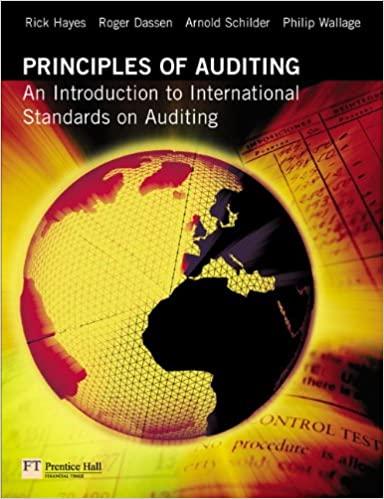Answered step by step
Verified Expert Solution
Question
1 Approved Answer
I ONLY NEED MARTIALS AND CONVERSION COST IN PROBLEM 3 AND THE JORNEL ENTRIES IN QUESTION 5. EVERYTHING YOU NEED IS IN THE JOURNAL ENTRIES.
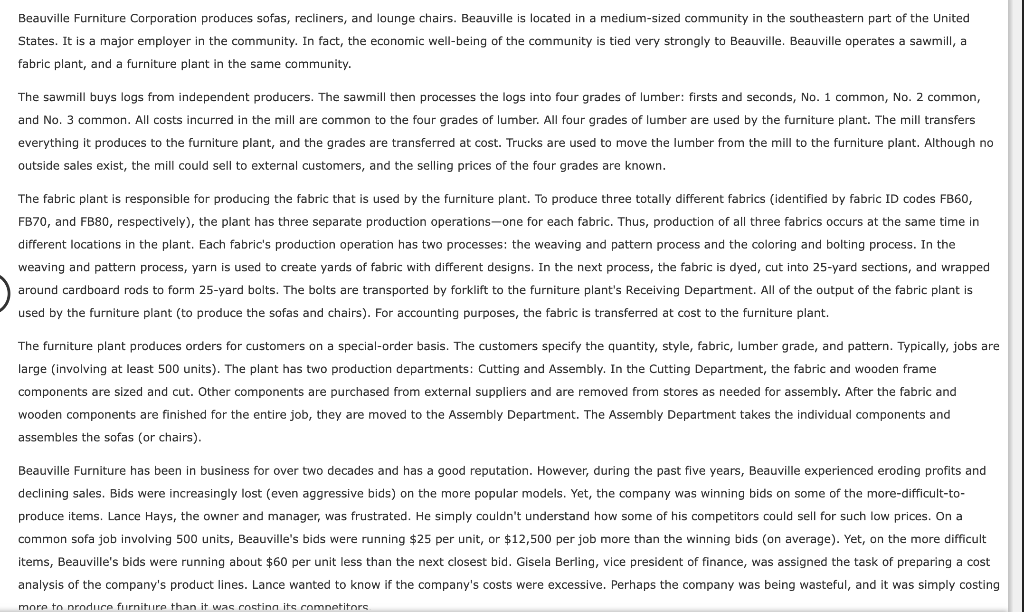
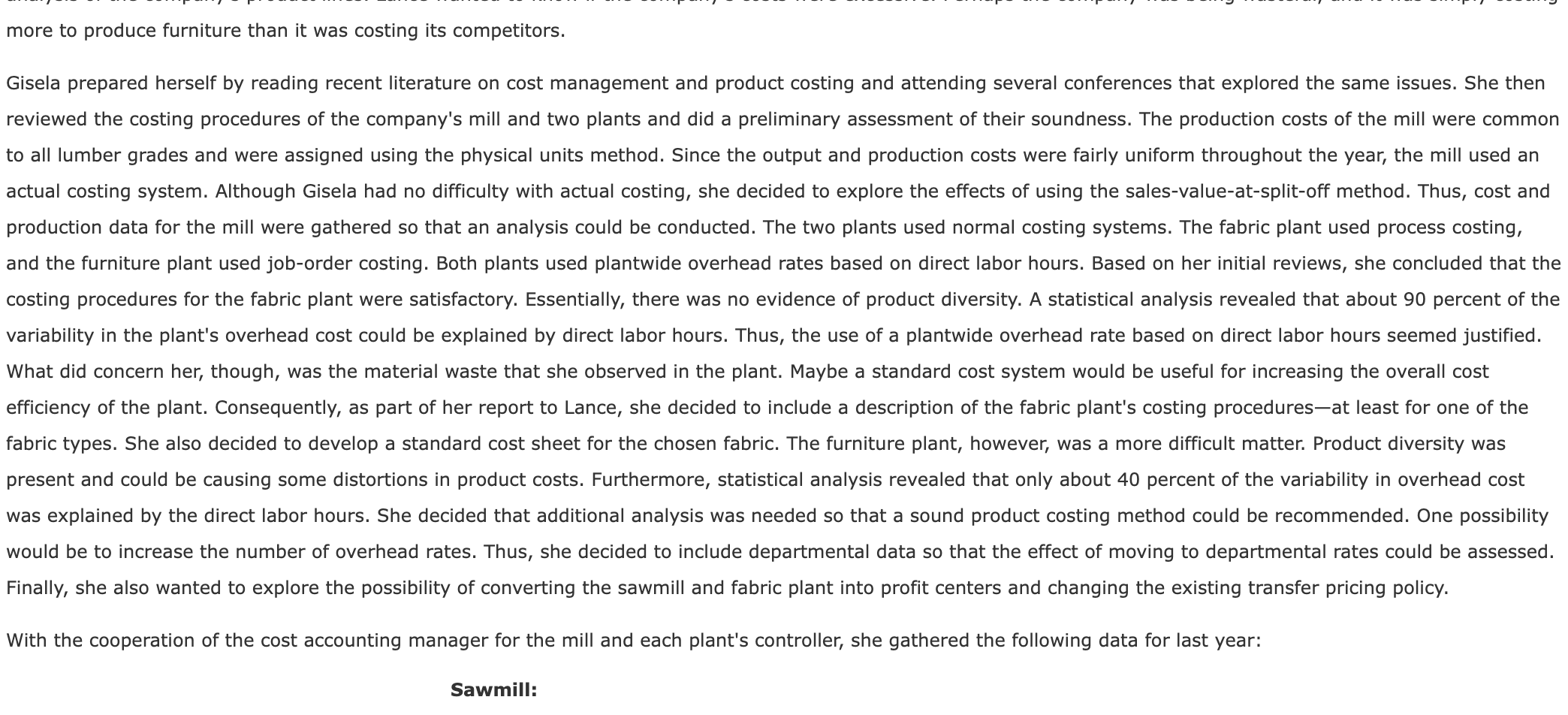
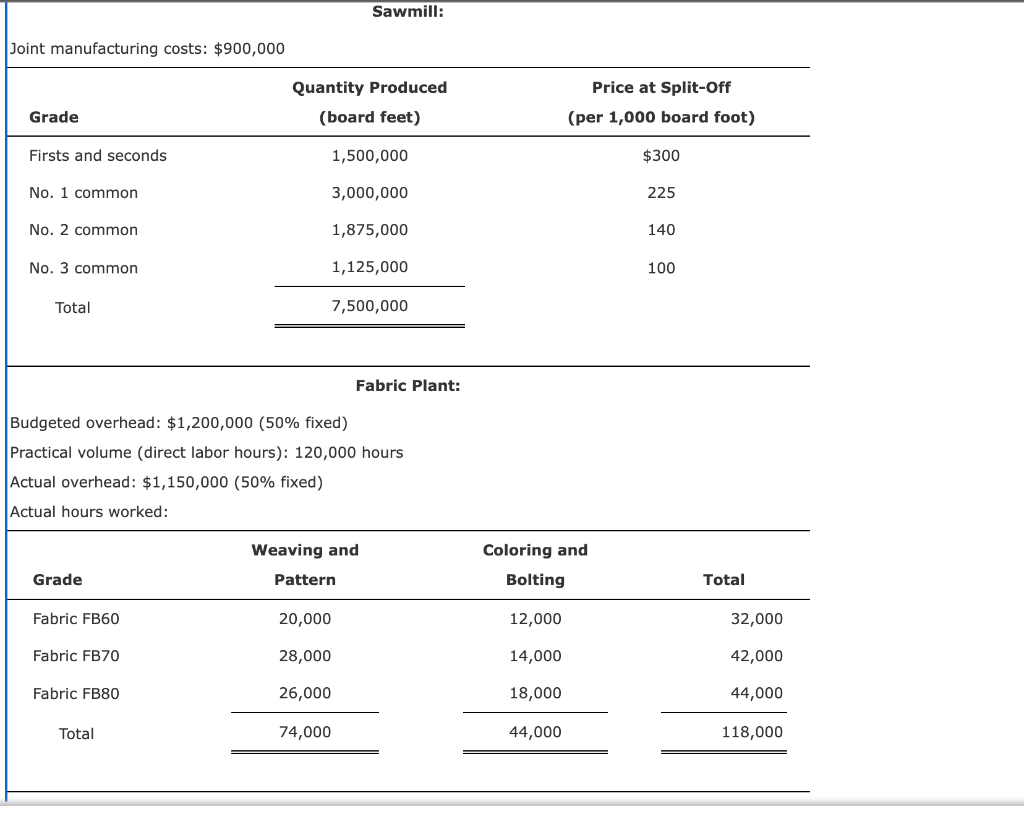
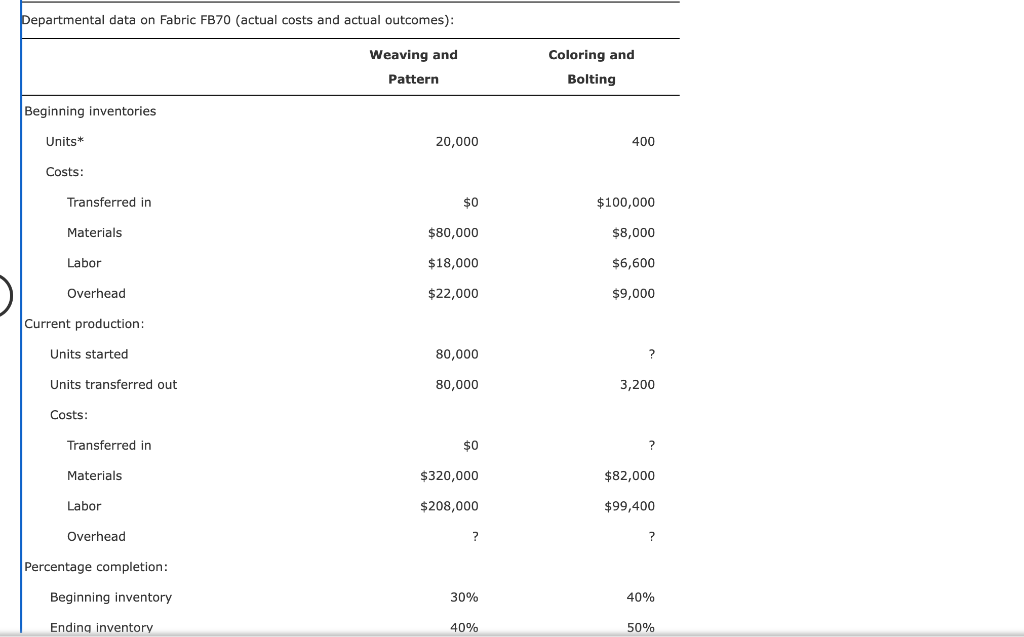

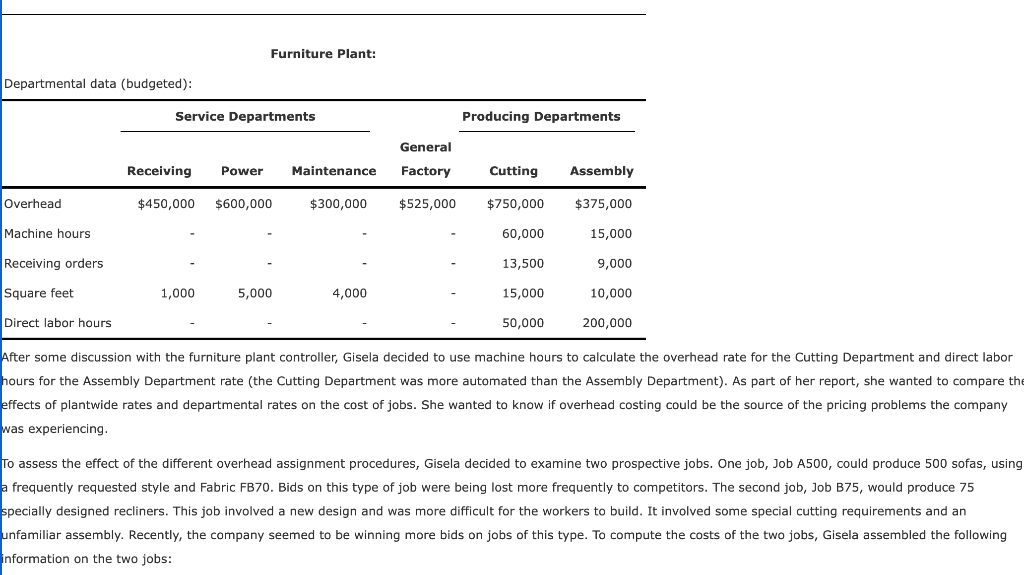
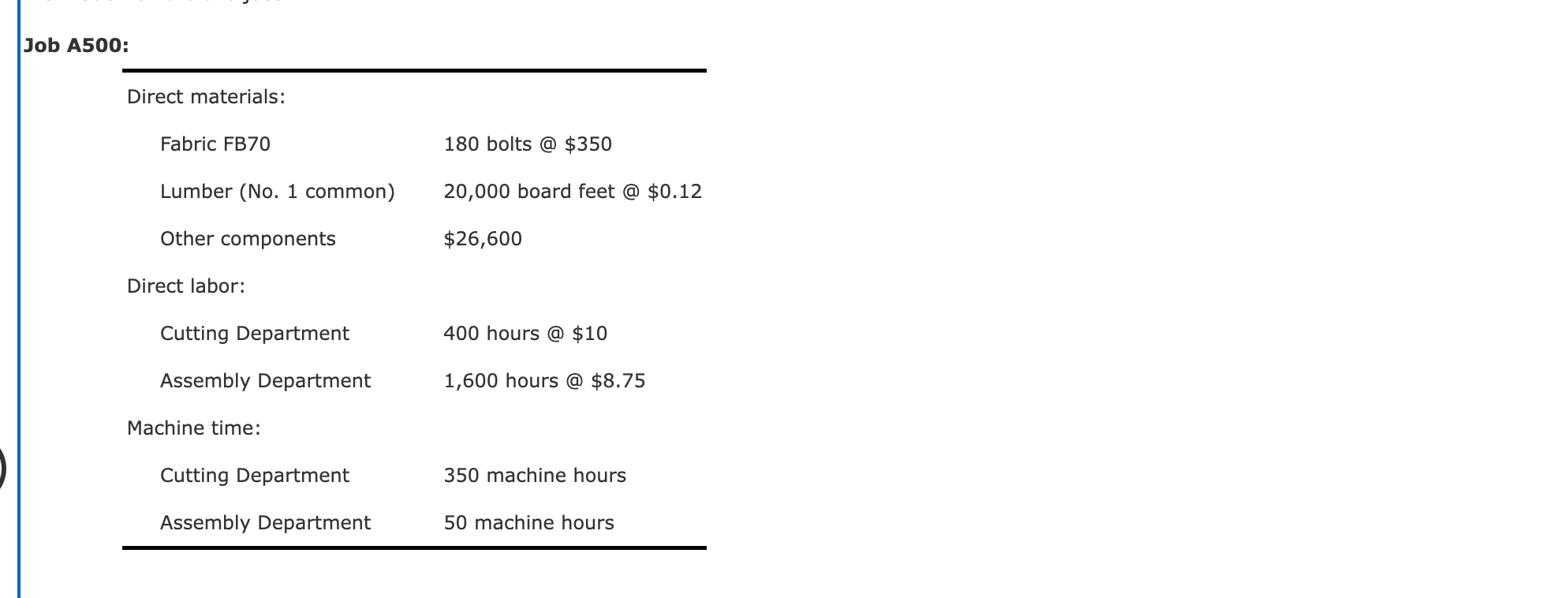
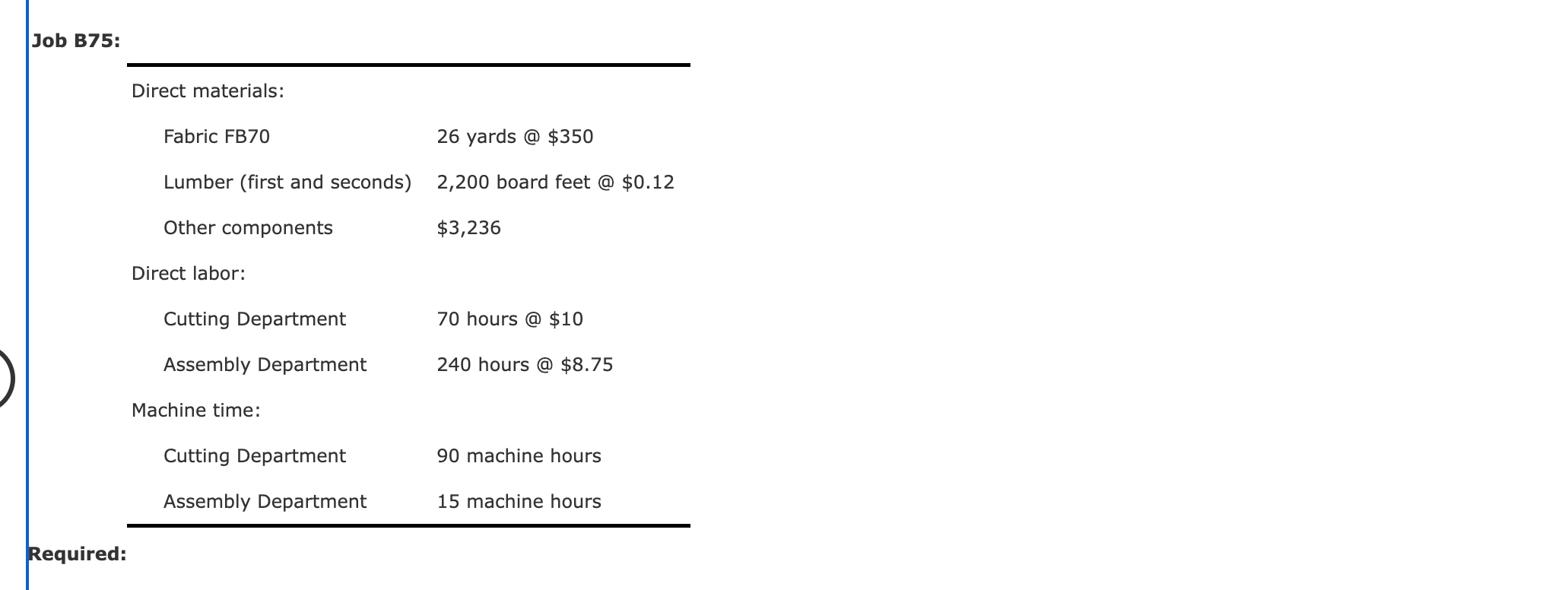
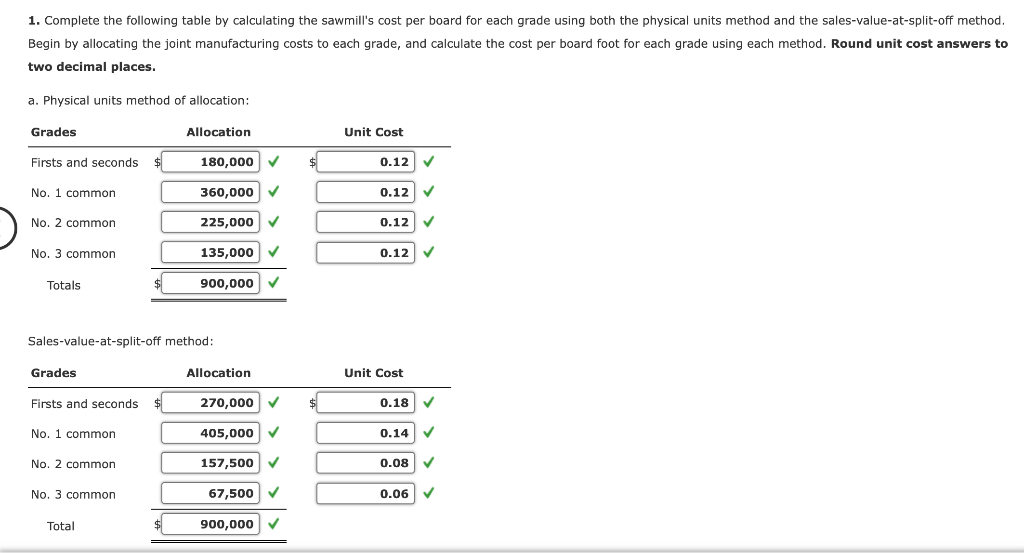

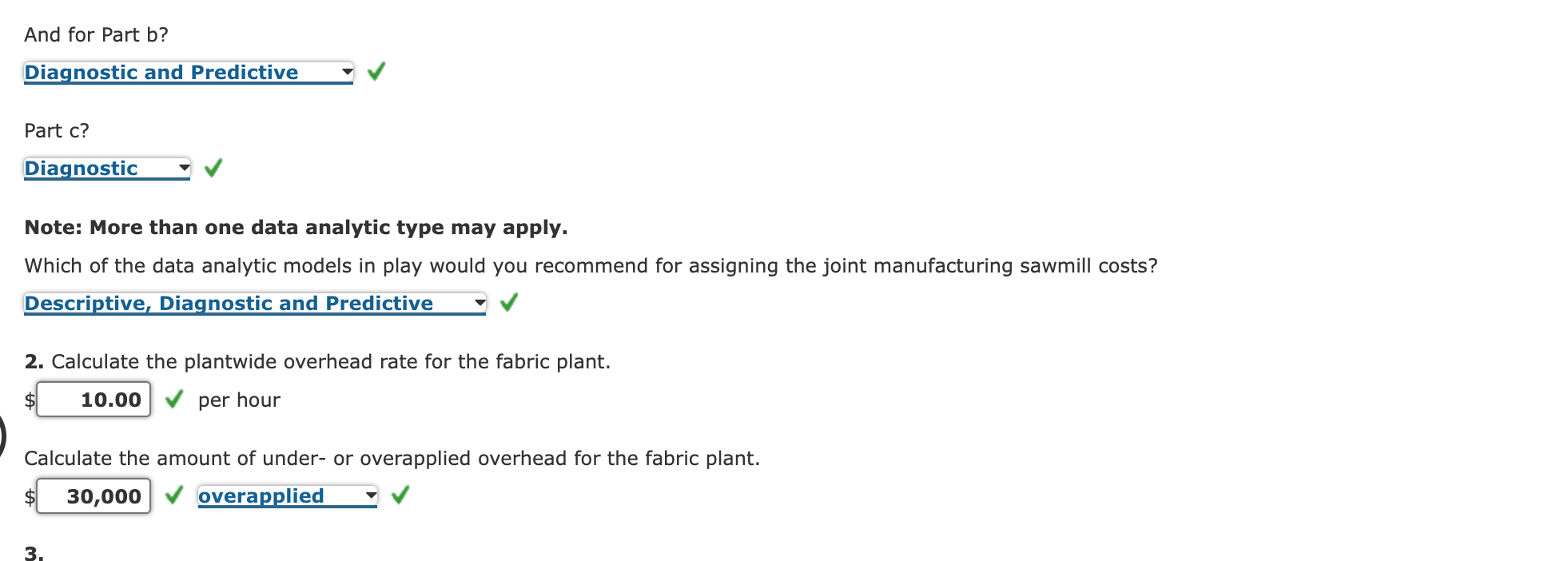
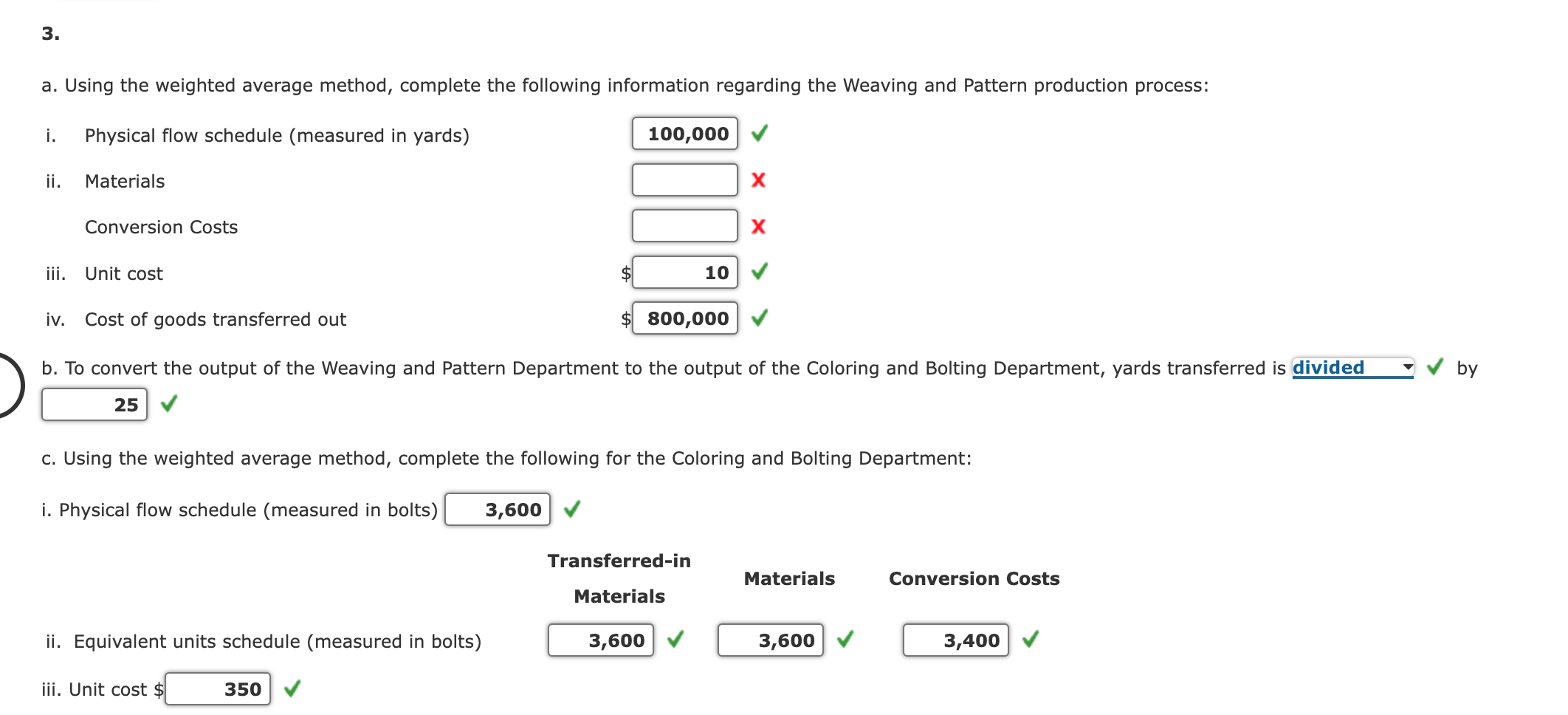
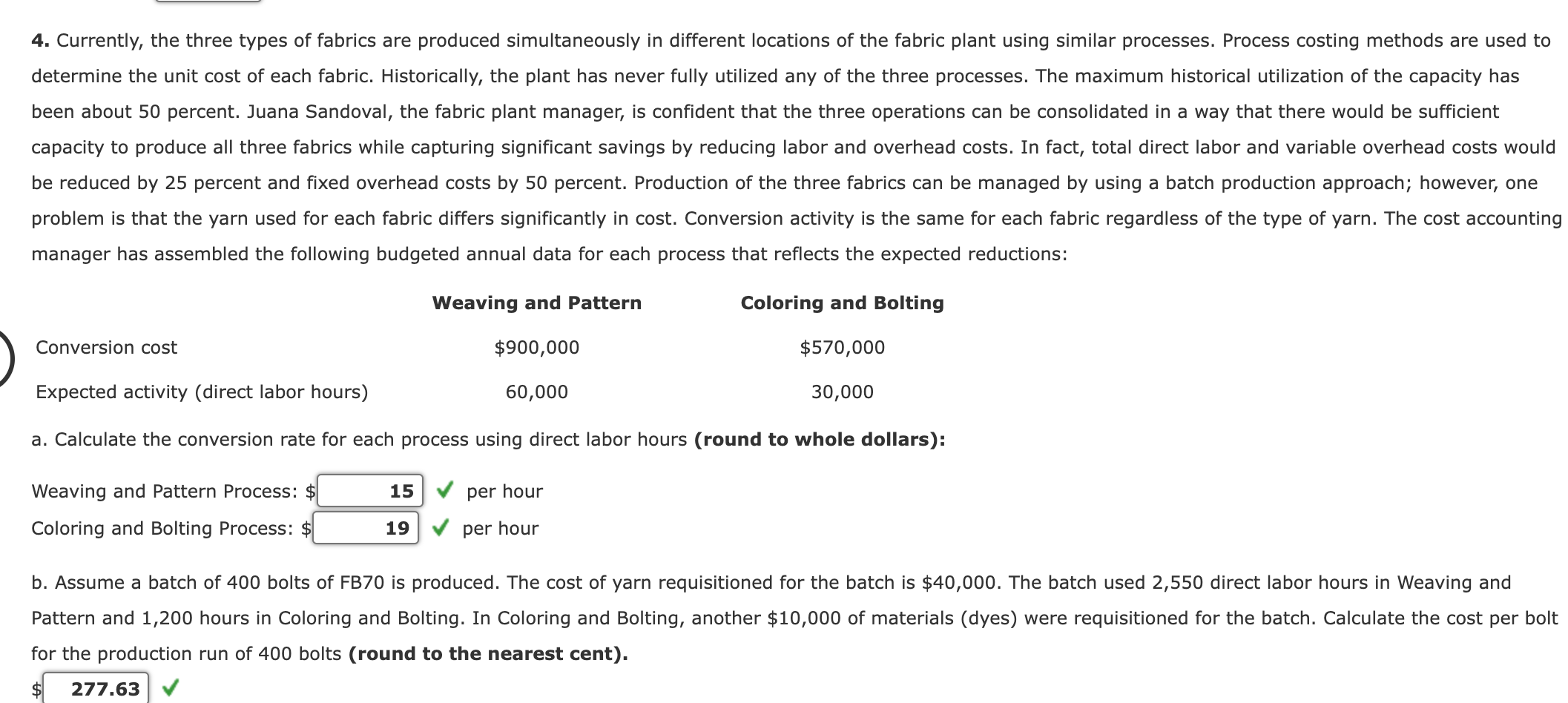
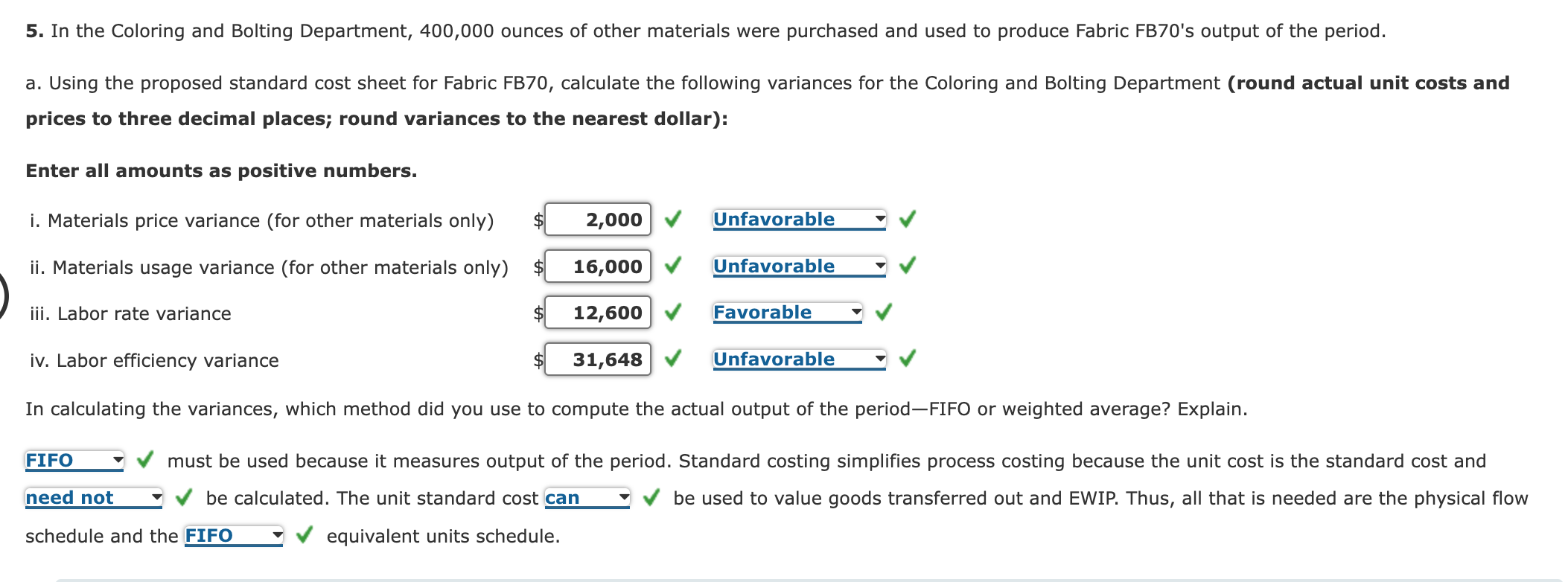
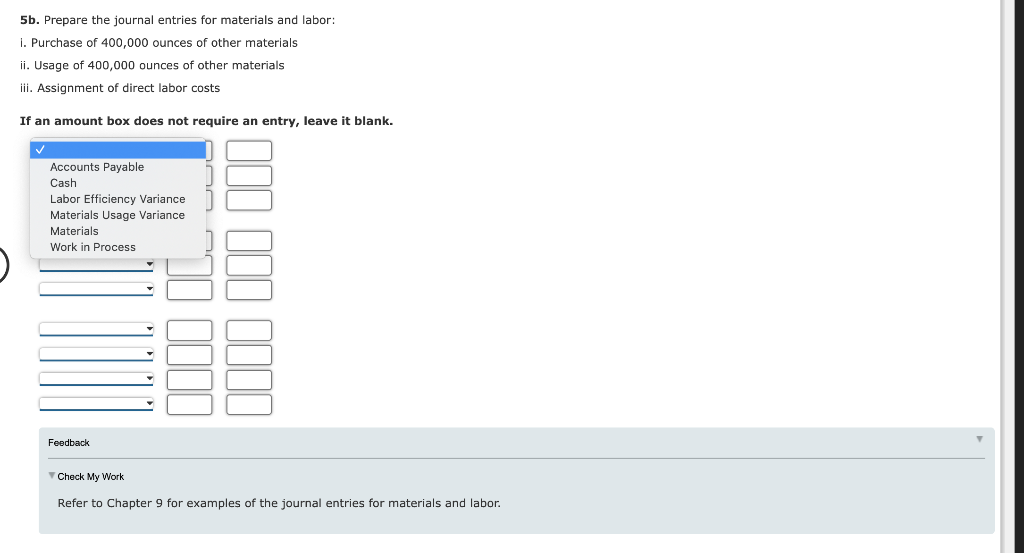
I ONLY NEED MARTIALS AND CONVERSION COST IN PROBLEM 3 AND THE JORNEL ENTRIES IN QUESTION 5. EVERYTHING YOU NEED IS IN THE JOURNAL ENTRIES. PLEASE ANSWER IN SAME FORMAT AS QUESTION THANK YOU :D
Beauville Furniture Corporation produces sofas, recliners, and lounge chairs. Beauville is located in a medium-sized community in the southeastern part of the United States. It is a major employer in the community. In fact, the economic well-being of the community is tied very strongly to Beauville. Beauville operates a sawmill, a fabric plant, and a furniture plant in the same community. The sawmill buys logs from independent producers. The sawmill then processes the logs into four grades of lumber: firsts and seconds, No. 1 common, No. 2 common, and No. 3 common. All costs incurred in the mill are common to the four grades of lumber. All four grades of lumber are used by the furniture plant. The mill transfers everything it produces to the furniture plant, and the grades are transferred at cost. Trucks are used to move the lumber from the mill to the furniture plant. Although no outside sales exist, the mill could sell to external customers, and the selling prices of the four grades are known. The fabric plant is responsible for producing the fabric that is used by the furniture plant. To produce three totally different fabrics (identified by fabric ID codes FB60, FB70, and FB80, respectively), the plant has three separate production operations-one for each fabric. Thus, production of all three fabrics occurs at the same time in different locations in the plant. Each fabric's production operation has two processes: the weaving and pattern process and the coloring and bolting process. In the weaving and pattern process, yarn is used to create yards of fabric with different designs. In the next process, the fabric is dyed, cut into 25-yard sections, and wrapped around cardboard rods to form 25-yard bolts. The bolts are transported by forklift to the furniture plant's Receiving Department. All of the output of the fabric plant is used by the furniture plant (to produce the sofas and chairs). For accounting purposes, the fabric is transferred at cost to the furniture plant. The furniture plant produces orders for customers on a special-order basis. The customers specify the quantity, style, fabric, lumber grade, and pattern. Typically, jobs are large (involving at least 500 units). The plant has two production departments: Cutting and Assembly. In the Cutting Department, the fabric and wooden frame components are sized and cut. Other components are purchased from external suppliers and are removed from stores as needed for assembly. After the fabric and wooden components are finished for the entire job, they are moved to the Assembly Department. The Assembly Department takes the individual components and assembles the sofas (or chairs). Beauville Furniture has been in business for over two decades and has a good reputation. However, during the past five years, Beauville experienced eroding profits and declining sales. Bids were increasingly lost (even aggressive bids) on the more popular models. Yet, the company was winning bids on some of the more-difficult-to- produce items. Lance Hays, the owner and manager, was frustrated. He simply couldn't understand how some of his competitors could sell for such low prices. On a common sofa job involving 500 units, Beauville's bids were running $25 per unit, or $12,500 per job more than the winning bids (on average). Yet, on the more difficult items, Beauville's bids were running about $60 per unit less than the next closest bid. Gisela Berling, vice president of finance, was assigned the task of preparing a cost analysis of the company's product lines. Lance wanted to know if the company's costs were excessive. Perhaps the company was being wasteful, and it was simply costing more to produce furniture than it was costing its competitors. more to produce furniture than it was costing its competitors. Gisela prepared herself by reading recent literature on cost management and product costing and attending several conferences that explored the same issues. She then reviewed the costing procedures of the company's mill and two plants and did a preliminary assessment of their soundness. The production costs of the mill were common to all lumber grades and were assigned using the physical units method. Since the output and production costs were fairly uniform throughout the year, the mill used an actual costing system. Although Gisela had no difficulty with actual costing, she decided to explore the effects of using the sales-value-at-split-off method. Thus, cost and production data for the mill were gathered so that an analysis could be conducted. The two plants used normal costing systems. The fabric plant used process costing, and the furniture plant used job-order costing. Both plants used plantwide overhead rates based on direct labor hours. Based on her initial reviews, she concluded that the costing procedures for the fabric plant were satisfactory. Essentially, there was no evidence of product diversity. A statistical analysis revealed that about 90 percent of the variability in the plant's overhead cost could be explained by direct labor hours. Thus, the use of a plantwide overhead rate based on direct labor hours seemed justified. What did concern her, though, was the material waste that she observed in the plant. Maybe a standard cost system would be useful for increasing the overall cost efficiency of the plant. Consequently, as part of her report to Lance, she decided to include a description of the fabric plant's costing procedures-at least for one of the fabric types. She also decided to develop a standard cost sheet for the chosen fabric. The furniture plant, however, was a more difficult matter. Product diversity was present and could be causing some distortions in product costs. Furthermore, statistical analysis revealed that only about 40 percent of the variability in overhead cost was explained by the direct labor hours. She decided that additional analysis was needed so that a sound product costing method could be recommended. One possibility would be to increase the number of overhead rates. Thus, she decided to include departmental data so that the effect of moving to departmental rates could be assessed. Finally, she also wanted to explore the possibility of converting the sawmill and fabric plant into profit centers and changing the existing transfer pricing policy. With the cooperation of the cost accounting manager for the mill and each plant's controller, she gathered the following data for last year: Sawmill: Sawmill: Quantity Produced (board feet) 1,500,000 3,000,000 1,875,000 1,125,000 7,500,000 Joint manufacturing costs: $900,000 Grade Firsts and seconds No. 1 common No. 2 common No. 3 common Total Budgeted overhead: $1,200,000 (50% fixed) Practical volume (direct labor hours): 120,000 hours Actual overhead: $1,150,000 (50% fixed) Actual hours worked: Grade Fabric FB60 Fabric FB70 Fabric FB80 Total Fabric Plant: Weaving and Pattern 20,000 28,000 26,000 74,000 Price at Split-Off (per 1,000 board foot) $300 225 140 100 Coloring and Bolting 12,000 14,000 18,000 44,000 Total 32,000 42,000 44,000 118,000 Departmental data on Fabric FB70 (actual costs and actual outcomes): Weaving and Pattern Beginning inventories Units* Costs: Transferred in Materials Labor Overhead Current production: Units started Units transferred out Costs: Transferred in Materials Labor Overhead Percentage completion: Beginning inventory Ending inventory 20,000 $0 $80,000 $18,000 $22,000 80,000 80,000 $0 $320,000 $208,000 ? 30% 40% Coloring and Bolting 400 $100,000 $8,000 $6,600 $9,000 3,200 ? $82,000 $99,400 ? 40% 50% Ending inventory 40% 50% *Units are measured in yards for the Weaving and Pattern Department and in bolts for the Coloring and Bolting Department. Note: With the exception of the cardboard bolt rods, materials are added at the beginning of each process. The cost of the rods is relatively insignificant and is included in overhead. Proposed standard cost sheet for Fabric FB70 (for the Coloring and Bolting Department only): Transferred-in materials (25 yards @ $10) $250.00 Other materials (100 ounces @ $0.20) 20.00 Labor (3.1 hours @ $8) 24.80 Fixed overhead (3.1 hours @ $5) 15.50 Variable overhead (3.1 hours @ $5) 15.50 Standard cost per unit $325.80 Furniture Plant: Departmental data (budgeted): Producing Departments General Receiving Power Maintenance Factory Cutting Assembly Overhead $450,000 $600,000 $300,000 $525,000 $750,000 $375,000 Machine hours 60,000 15,000 Receiving orders 13,500 9,000 Square feet 1,000 5,000 4,000 15,000 10,000 Direct labor hours 50,000 200,000 After some discussion with the furniture plant controller, Gisela decided to use machine hours to calculate the overhead rate for the Cutting Department and direct labor hours for the Assembly Department rate (the Cutting Department was more automated than the Assembly Department). As part of her report, she wanted to compare the effects of plantwide rates and departmental rates on the cost of jobs. She wanted to know if overhead costing could be the source of the pricing problems the company was experiencing. To assess the effect the different overhead assignment procedures, Gisela decided to examine two prospective jobs. One job, Job A500, could produce 500 sofas, using a frequently requested style and Fabric FB70. Bids on this type of job were being lost more frequently to competitors. The second job, Job B75, would produce 75 specially designed recliners. This job involved a new design and was more difficult for the workers to build. It involved some special cutting requirements and an unfamiliar assembly. Recently, the company seemed to be winning more bids on jobs of this type. To compute the costs of the two jobs, Gisela assembled the following information on the two jobs: Service Departments Job A500: Direct materials: Fabric FB70 Lumber (No. 1 common) Other components Cutting Department Assembly Department Cutting Department Assembly Department Direct labor: Machine time: 180 bolts @ $350 20,000 board feet @ $0.12 $26,600 400 hours @ $10 1,600 hours @ $8.75 350 machine hours 50 machine hours Job B75: Required: Direct materials: Fabric FB70 Lumber (first and seconds) Other components Cutting Department Assembly Department Cutting Department Assembly Department Direct labor: Machine time: 26 yards @ $350 2,200 board feet @ $0.12 $3,236 70 hours @ $10 240 hours @ $8.75 90 machine hours 15 machine hours 1. Complete the following table by calculating the sawmill's cost per board for each grade using both the physical units method and the sales-value-at-split-off method. Begin by allocating the joint manufacturing costs to each grade, and calculate the cost per board foot for each grade using each method. Round unit cost answers to two decimal places. a. Physical units method of allocation: Grades Allocation Unit Cost Firsts and seconds $ 180,000 0.12 No. 1 common 360,000 0.12 No. 2 common 225,000 0.12 135,000 0.12 No. 3 common Totals $ 900,000 Sales-value-at-split-off method: Grades Firsts and seconds $ No. 1 common No. 2 common No. 3 common Total $ Allocation 270,000 405,000 157,500 67,500 900,000 $ $ Unit Cost 0.18 0.14 0.08 0.06 Sawmill Cost and Production Data Physical Units Method: Sales-Value-at-Split-Off Method: Cost per Board Foot Cost per Board Foot Firsts and seconds 0.12 $ 0.18 No. 1 common 0.12 0.14 No. 2 common 0.12 0.08 No. 3 common 0.12 0.06 b. Given that the sawmill provides lumber at cost to the furniture plant, using the sales-value-at-split-off method increases the cost of Job A500 by $ 40 X and increases the cost of Job B75 by $ 132 .Step by Step Solution
There are 3 Steps involved in it
Step: 1

Get Instant Access to Expert-Tailored Solutions
See step-by-step solutions with expert insights and AI powered tools for academic success
Step: 2

Step: 3

Ace Your Homework with AI
Get the answers you need in no time with our AI-driven, step-by-step assistance
Get Started


